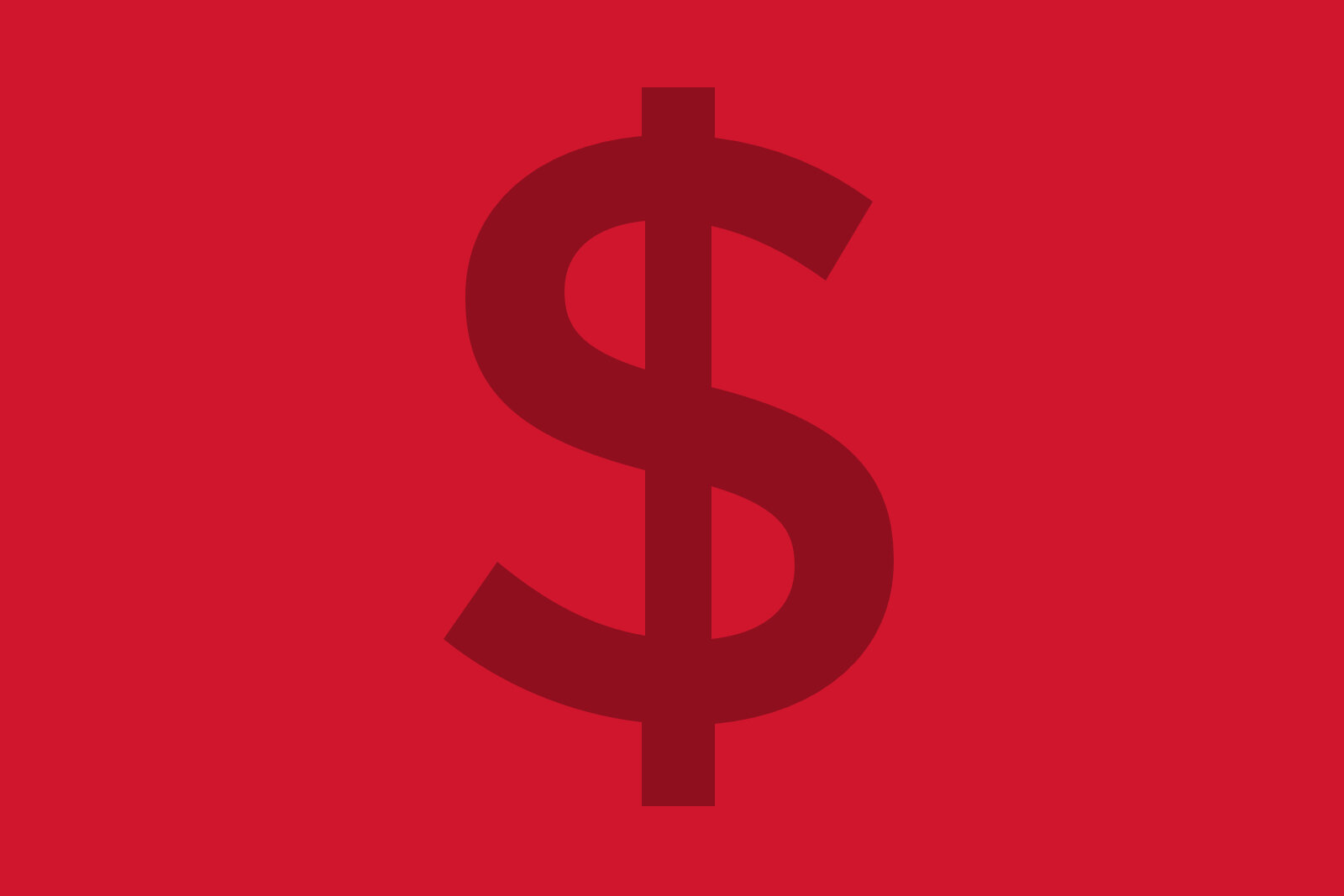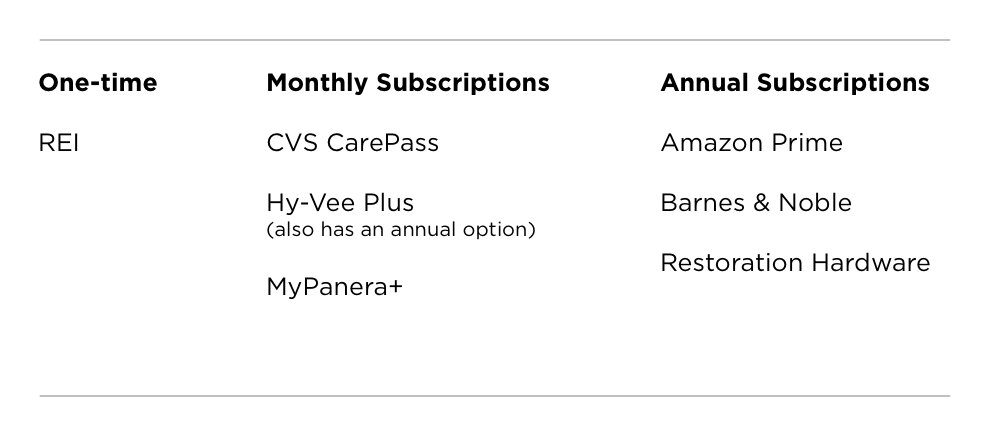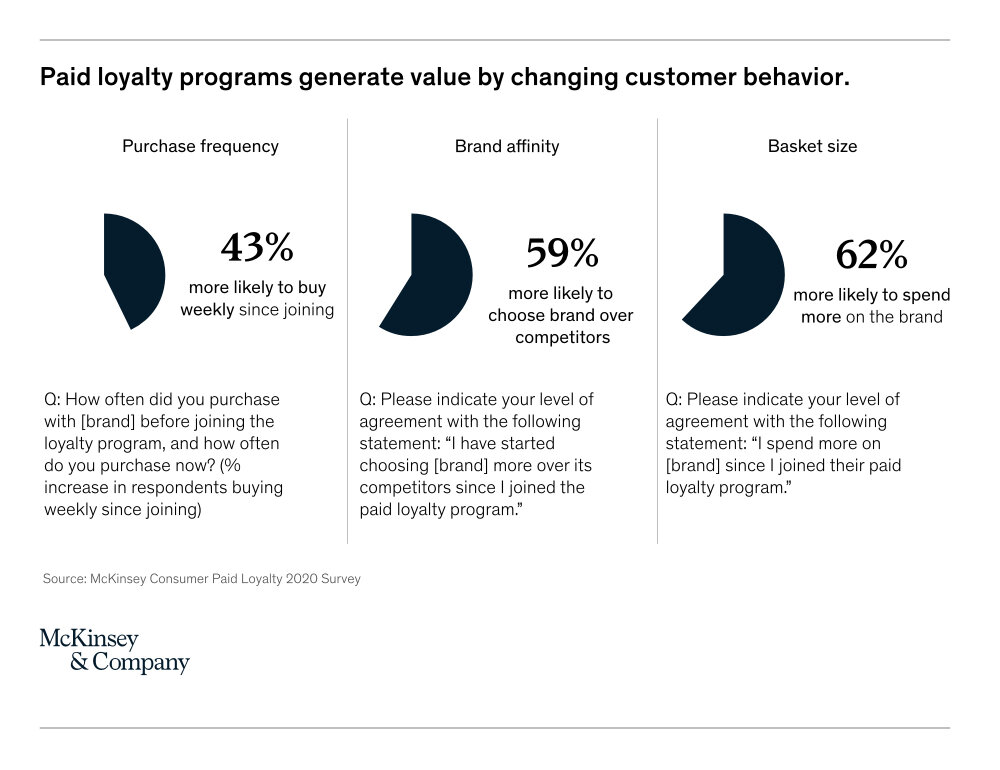Is Paid Loyalty Right for Your Brand?

Loyalty programs are good business—and they’re everywhere. They’re often free to join and begin with a simple and free registration process. Sometimes your telephone number or email address is all you need to provide to start enjoying program benefits. Other programs require a membership fee to participate.
But when does it make sense for a brand to offer a fee-based program? And why would customers be willing to pay a fee when there are so many free options out there?
“Premium” or “paid” loyalty programs resemble traditional loyalty programs with one important distinction: a participation fee. For brands offering paid programs, customers typically have the option to choose to shop as “regular” customers or they can pay a fee to elevate their status. This can be a one-time membership fee or a recurring subscription.

We’re not talking about pure subscription services—e.g., Costco, StitchFix, or even a hot-sauce-of-the-month club—which require a fee to even transact with them. Instead, we’re focusing on loyalty programs that offer premium benefits for a fee. Current popular examples include Amazon Prime, MyPanera+, and the REI Co-op.
WHY CHOOSE PAID LOYALTY?
A 2020 McKinsey survey on loyalty programs found that members of paid loyalty programs are 60 percent more likely to spend more on the brand after subscribing. Free loyalty programs only increase that likelihood by 30 percent.1 In addition, as the accompanying chart illustrates, paid loyalty programs drive higher purchase frequency, bigger basket size, and greater brand affinity compared with free loyalty programs. As a result, paying members can bring several times more value than nonpaying members, even when you set aside membership revenue.

WHAT CAN PAID LOYALTY DO FOR YOUR PROGRAM?
A paid loyalty program can be a great way to elevate how customers interact with your brand. Here are a few ways paid loyalty can upgrade the customer experience:
Differentiate your brand. Members of paid programs purchase more frequently and are more likely to choose the paid brand over competitors. As a result, brands working to stand out in an undifferentiated category might leverage paid loyalty as a strategy to make brand switching less desirable.
For example, consumers have many options for purchasing drugstore items: chain drug stores, independent drug stores, grocery stores, general merchandise stores such as Target or Walmart, and even Amazon.com. The CVS CarePass program is designed to keep members returning to CVS. For $5 per month or $48 per year, members receive a $10 monthly promotional reward, 20% off CVS Health Brand products, free same-day prescription delivery, and other benefits. The $10 monthly promo reward alone is a great example of delivering value beyond the membership investment.
Jump-start activity and deliver immediate value. Traditional loyalty programs require members to complete a series of transactions before they deliver a reward. With a premium model, members can enjoy benefits as soon as they join.
MyPanera+, a coffee subscription, includes three months of free coffee at enrollment. After that, a member’s credit card is charged $8.99 each month and they receive unlimited hot coffee, hot tea, and iced coffee (any size, once up to every two hours).
Drive ongoing member engagement. According to research done by Accenture, 57 percent of customers spend more on brands or providers to which they are loyal.2 Once a member commits to paying a membership fee, they’re likely to maximize interaction with that brand to get the most value from the investment.
Amazon Prime, which started as free shipping, leveraged this behavioral trend by expanding its subscription service to include video streaming, free e-books, and other content.
WHEN DOES PAID LOYALTY MAKE SENSE?
Paid loyalty makes sense for brands that offer attractive but scarce benefits. Paid programs funnel their limited benefits to customers who demonstrate high engagement. They also provide a more predictable revenue stream to subsidize program benefits that might otherwise be cost prohibitive.
Beyond making sense for the brand, though, a paid loyalty proposition needs to make sense for members. Here are three scenarios in which a paid model makes sense from a member perspective:
Provide perceived value of paid benefits greater than membership fee. McKinsey researchers found that consumers expect to receive a return of at least 150 percent on a subscription fee.3 This value could be delivered via rebates, discounts on future purchases, shipping, special access, or other benefits.
For example, consumers have a number of choices for where to purchase outdoor gear. But REI differentiates itself as a membership co-op. After paying a one-time $20 fee, members receive a 10% annual dividend on eligible purchases for a lifetime. Customers who sign up for the program anticipate that in the coming years they’ll spend more than $200 at REI to recoup the price of the membership fee. Beyond the annual rebate, members receive discounts on renting gear and store services; and they have access to special events, like the REI Garage Sale, and members-only merchandise.
Create a sense of exclusivity through experiences. In a study by PwC, 42% of respondents said they would pay more for a friendly, welcoming experience, and 43% of respondents would pay more for greater convenience.4
For $199 per year ($179 for Best Buy credit cardholders), Best Buy Beta members receive exclusive member pricing, unlimited Geek Squad technical support, up to two years’ protection on most product purchases, free standard shipping and delivery, and free installation on most products and appliances. “The goal of Best Buy Beta is to create a membership experience that customers will love and to leave them feeling confident throughout their relationship with Best Buy,” says Allison Peterson, Best Buy’s chief customer officer in a corporate release. “The pilot offers premium service, complete with support aimed at anticipating our customers’ needs.”5
Give the gift of time. Staying home has pushed consumers to be more creative with their daily schedules as they juggle their work, family, and personal lives. Brands that find ways to give time back will have more appeal than ever.
Hy-Vee is a grocery store chain in the Midwest. For $99 per year or $12.95 per month, Hy-Vee Plus members receive free standard delivery, free two-hour express pickup, a dedicated Red Line Concierge phone line at members’ preferred stores, and exclusive monthly offers. Over the course of a year, the membership can save members who shop weekly about $418 on delivery fees, plus time savings for not having to make trips to the store. As an added value, in January 2021, registered dieticians provided a free consultation service that offered a month of menu ideas.6
SO . . . IS PAID LOYALTY RIGHT FOR YOUR BRAND?
Begin answering that question by taking these steps:
Determine whether you can provide benefits worth paying for. First, examine the customer experience you currently provide. Next, try to identify ways you can add value. Consider both tangible benefits (such as additional program points or gifts) and intangible benefits (e.g., streamlining the customer experience).
Conduct some customer research. Interview. Survey. Hold a focus group or two. All can be done online, and the insights collected may be invaluable. Primary research allows customers a voice that will help you learn what they value. It can also identify unmet needs or pain points and ways to address them.
Understand program economics. Analyze your customer data and develop a business model that holistically considers your program’s costs and benefits. Is a potential program benefit valuable to your customers but not economically feasible without a subsidy? Maybe a fee-based program would allow you to share that benefit with your most-engaged customers.
Consider a pilot program. Burger King piloted its digital loyalty program, Royal Perks, in three U.S. markets before committing to a nationwide expansion.7 Lululemon tested a paid membership option in a few North American markets. A pilot program is a good way to test the waters. You can get a better understanding of how members are likely to behave—with the built-in exit strategy of a firm end date. Then, if you need more data, you can extend the end date. Or you can conclude your pilot as scheduled to assess results and determine next steps.
Successful loyalty programs take a variety of formats, and it’s important to rely on data to strategize what makes the most sense for your brand. A pay-to-participate model designed to drive engagement and deliver a premium member experience might be just the accelerator your brand needs.
Nina Rose is a senior director of Strategic Services for The Lacek Group, a Minneapolis-based data-driven loyalty, experience and customer engagement agency that has been delivering personalization at scale for its world-class clients for more than 30 years. The Lacek Group is an Ogilvy Company.
NOTES:
-
Julien Boudet, Jess Huang, and Ryter von Difloe, “Coping with the Big Switch: How Paid Loyalty Programs Can Help Bring Consumers Back to Your Brand.” McKinsey and Company. October 22, 2020. https://www.mckinsey.com/business-functions/marketing-and-sales/our-insights/coping-with-the-big-switch-how-paid-loyalty-programs-can-help-bring-consumers-back-to-your-brand.
-
Robert Wollan, Phil Davis, Fabio de Angelis, and Kevin Quiring, “Seeing Beyond the Loyalty Illusion.” Accenture. 2017. https://www.accenture.com/_acnmedia/pdf-43/accenture-strategy-gcpr-customer-loyalty.pdf.
-
“Coping with the Big Switch.”
-
Tom Puthiyamadan and José Reyes, “Experience Is Everything. Here’s How to Get It Right.” PwC. 2018. https://www.pwc.com/us/en/services/consulting/library/consumer-intelligence-series/future-of-customer-experience.html.
-
Katie Huggins, “Best Buy Piloting Paid Membership Program in Select Markets.” Best Buy. April 7, 2021. https://corporate.bestbuy.com/best-buy-piloting-paid-membership-program-in-select-markets/#:~:text=For%20%24199.99%20per%20year%2C%20or,through%20the%20Best%20Buy%20app.
-
Danny Kucharsky, “Locking in Loyalty.” Canadian Grocer. February 2, 2021. https://canadiangrocer.com/locking-loyalty.
-
Emma Liem Beckett, “Burger King Expands Loyalty Program Nationwide.” Restaurant Dive. February 9, 2021. https://www.restaurantdive.com/news/burger-king-loyalty-program-test-includes-rewards-via-self-delivery/594779/.

